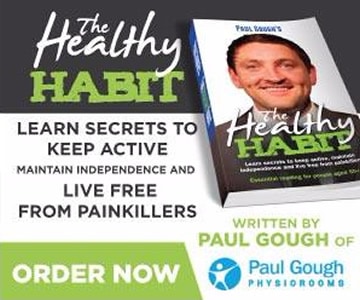Time for some Great North Run training tips?
So right now, my physio clinic is being flooded with people in training for the Great North Run.
I should say, people who are “over training” for the Great North Run – limping in with all sorts of injuries ranging from a stiff lower back, calf and Achilles problems and the dreaded “shin splints”.
And to help you out if you’re in training for it, here’s a list of the top 3 things what commonly goes wrong at this time of year if you’re training for the GNR, and how to avoid it from getting in the way of what you’re trying to achieve:
1.) Achilles Tendon Pain – I’d say that this is the most common complaint we’ll from now until the race starts, and even for a short while after it. Why does it happen? Well, it’s usually caused by too much road running and can happen when the distances involved are short.
But, if you’re now heading up towards the 8 -10 miles stage for your training, then it’s something you need to look out for. Out-dated or overly worn trainers can also cause this type of problem, as can swapping to a different make or brand, when you’ve got used to another type. Stretching your calf and Achilles tendon after when you’ve ran will help too, as will applying ice for about ten minutes. This type of injury can take at least 3-4 weeks to settle if you suffer, so be sure to proceed with caution of it’s just at the niggle stage right now.
2.) Lower back pain and stiffness – this often goes hand in hand with Achilles pain too. And if you’re back is beginning to show signs of feeling really stiff and heavy when you run, almost as though it wants to “implode”… then it’s telling you that you’re lower back isn’t strong enough and it’s in need of some urgent rest. Your running style (always leaning forward) can make this worse and my tip is that you pretty quickly ease down and add in some specific yoga and Pilates type exercises that will help strengthen and make it more flexible, too.
3.) Shin splints – this is the one that you don’t want to happen to you because pretty much only rest can stop the pain. If it has already started, you’ll feel excruciating pain on the inside of your shin bone that gets worse as you run and the it will come and sooner and sooner into the run, as the days go by. Apply lots of ice to the shin bone (wrapped in a tea towel to protect your skin) and it’ll also help to check trainers for signs that they’re out of date or looking worn which means you’re joints aren’t getting the support they need, and also begin the same Pilates and yoga routine that I’ve just mentioned above – as it’s never too late to start.
If it’s so bad you can’t run, it’s very unlikely that you’ll be able to in a day or twos times. Be sensible, and give yourself at least a weeks rest, if not more, and do something like a couple of hours swimming or bike riding to keep up your fitness in stead.
Preparing for the Great North Run is easy if you follow the steps and listen to your body.
Resist the temptation to up your training to quickly, as most of the time, injuries like the ones I’ve been seeing all week, and just described to you above, are happening because runners skip a phase (or two) and jump straight from 30 minutes, to 60. And it inevitably causes problems.
Good for me, but not for you or the charities you’re running for so follow these tips wisely.
If you’d like to know about what to do to recover quick from running injuries, please go to my website: www.paulgoughphysio.com/sports-injury-clinic where there is a free special report waiting for you to download instantly and start copying the “the 7 secret recovery strategies that only the pro-athletes know and use”. Good luck.


